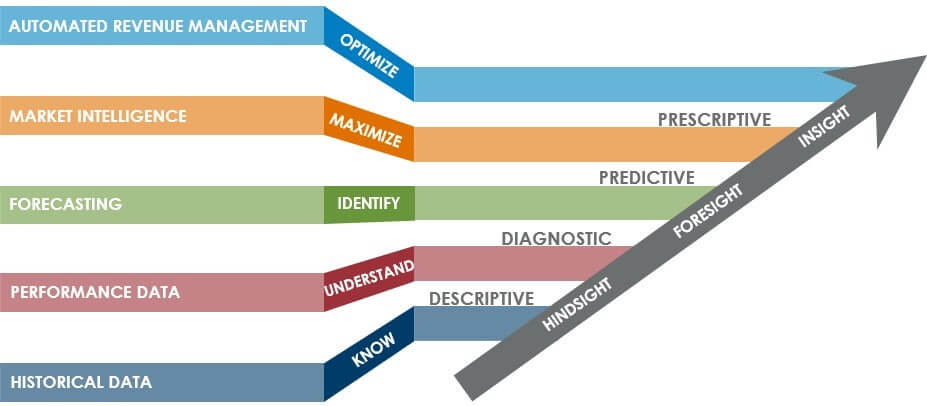Is bigger always better?
- Using big data effectively can prove to be difficult for many hotels
- Identifying the right types of smart data is a critical first step for every hotel
- Hotels need to prioritize the data that provides them with meaningful insight and action
Years before big data exploded into something like a phenomenon, hotels were already incorporating industry data into their revenue technologies and strategies. But while big data might be indicated as the core of intelligent decision-making, using it effectively can prove to be daunting task for many hotels.
Identifying the right types of smart data is a critical first step for every hotel. At the highest level, analytical revenue management technology is traditionally comprised from a combination of four data set types, with each set contributing to very distinctive outputs. These four data set types are descriptive data, diagnostic data, predictive data and prescriptive data.

Descriptive analytics utilize data similar to standard hotel reporting, and large volumes of this data are used to give hotels a view of what happened in the past. These descriptive analytics allow hoteliers to make informed decisions about the future based on data that details what has already happened. Descriptive data falls into a category classified as “hindsight,” which is data that provides hotels with the ability to interpret their historical performance.
Hotel technology also uses diagnostic data to measure hotel performance relative to its market by collecting historical data to understand why an outcome occurred. These types of analytics can also be used by hotels to help benchmark their property performance against their competition, for example the STR reporting. Similar to descriptive data, diagnostic data also falls within the hindsight category since it uses data from their past performance.
The majority of today’s revenue management solutions utilize predictive data, which provides hotels with occupancy and revenue forecasts. These forecasts can accurately manage price and inventory to achieve an ideal mix of business. However, as predictive analytics are derived from forecast models based on historical records, there can be challenges forecasting time frames with brand new market conditions or events. Predictive data falls into the “foresight” category, as its data forecasts future outcomes to identify revenue opportunities for a hotel.
In more recent years, prescriptive data has made its way to center stage. Prescriptive analytics not only leverage historical data points, but future data that allows hotels to go beyond conventional hotel forecasting. Through the use of advanced market intelligence, prescriptive analytics are able to understand optimal outcomes and the strategic decisions needed to achieve them. Prescriptive analytics move hotels beyond foresight into the “insight” area of analytical capabilities.
As big data continues its reign as one of hospitality’s most prevalent revenue management themes, hotels have had less focus on the ‘big’ narrative, and more on the application of ‘smart’ data. With large amounts of disparate data available today, hotels need to prioritize the data that provides them with meaningful insight and action. Leveraging forward-looking demand intelligence with historical and external data sources will deliver optimal revenue results and maximum profitability.
